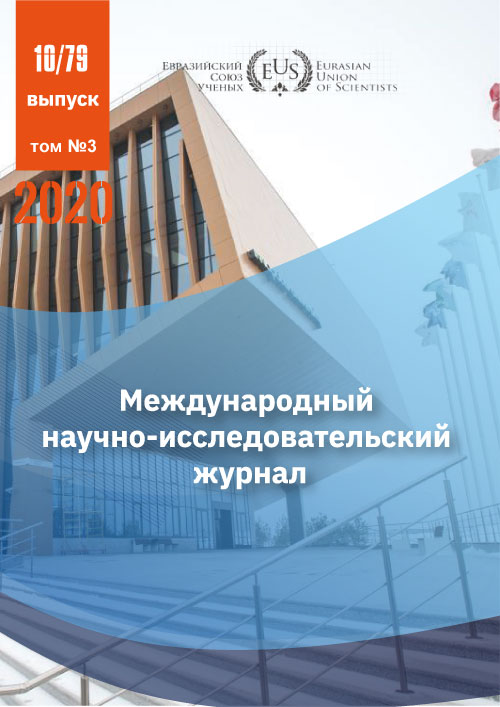CANCER REGISTRATION SYSTEM IN UZBEKISTAN: DEVELOPMENT OF A POPULATION CANCER REGISTER MODEL IN THE REPUBLIC OF UZBEKISTAN
Abstract
The Republic of Uzbekistan is in the process of developing a cancer registration system. For the first time, a cancer registration system has already been created to analyze data of cancer patients in the Republican Specialized Scientific and Medical Practical Center of Oncology and Radiology (RSSMPCOR) and its several branches. However, the existing system was found to be insufficient for data management in regions of Uzbekistan. Along with the growth of oncological morbidity and an increase in the need for cancer care, it is necessary to develop a perfect cancer registry model in Uzbekistan. It was conducted qualitative study using the data collection method by interviewing doctors and other employees associated with registration activities. The result of this study is to create network skeleton for registering cancer patients in RSSMPCOR and its branches, including data transfer security and a plan for information disaster recovery system in case of system failures. It was also estimated the number of employees involved in cancer registration and the technical devices required to support the system.
References
2. Каприн А.Д., Старинский В.В., Петрова Г.В. “Состояние онкологической помощи в России в 2018 году” / Книга //-Москва, 2019.
3. Бокерия Л. А., Лищук В. А. Формирование концепции здравоохранения с использованием современных информационных и интеллектуальных средств //Научные труды Российской научно-практической конференции (Москва, 2829 мая 2003) -М. -2013. -С.25-29
4. Вальков М.Ю., Карпунов А.А., Коулман М.П., Аллемани К., Панкратьева А.Ю., Потехина Е.Ф., Валькова Л.Е., Гржибовский А.М. Популяционный раковый регистр для науки и практического здравоохранения // Экология человека. 2017 №5. С. 54-62.
5. Виноградова H. H. Возможности популяционно-больничного канцер-регистра в совершенствовании онкологической помощи. Автореф. дисс. докт. мед. наук М. -2015.
6. Bray F, Parkin DM (2009). Evaluation of dataquality in the cancer registry: principles andmethods. Part I: comparability, validity andtimeliness. Eur J Cancer.45(5):747–55.http://dx.doi.org/10.1016/j.ejca.2008.11.032PMID:19117750
7. Brenner H, Hakulinen T (2009). Implications of in complete registration of deaths on longtermsurvival estimates from population-based cancerregistries. Int J Cancer. 125(2):432–7. http://dx.doi.org/10.1002/ijc.24344 PMID:19422045
8. Buemi A (2008). Pathology of Tumours forCancer Registry Personnel. Lyon: InternationalAgency for Research on Cancer and InternationalAssociation of Cancer Registries. Публикацияразмещена на сайте: http://www.iacr.com.fr/PathologyManualApr08.pdf.Je nsen OM, Storm HH (2016). 30. Reporting of results. In: Jensen OM, Parkin DM, MacLennan R, Muir CS, Skeet RG, editors. Cancer Registration:Principles and Methods. Lyon: InternationalAgency for Research on Cancer (IARC ScientificPublications, pp. 108– 125.Публикация размещена на сайте.2016.
9. Jensen OM, Whelan S (2011). Planning acancer registry. In: Jensen OM, Parkin DM,MacLennan R, Muir CS, Skeet RG, editors.Cancer Registration: Principles and Methods.Lyon: International Agency for Research oCancer (IARC Scientific Publications, No. 95);pp. 22–28. Публикация размещена на сайтеhttp://www.iarc.fr/en/publications/pdfsonline/epi/sp95/index.php.
10. MacLennan R (2014). Items of patient informationwhich may be collected by registries. ИсточникJensen OM, Parkin DM, MacLennan R, Muir CS,Skeet RG, editors. Cancer Registration: Principlesand Methods. Lyon: International Agency forResearch on Cancer (IARC Scientific Publications,No. 95); pp. 43–63.
CC BY-ND
A work licensed in this way allows the following:
1. The freedom to use and perform the work: The licensee must be allowed to make any use, private or public, of the work.
2. The freedom to study the work and apply the information: The licensee must be allowed to examine the work and to use the knowledge gained from the work in any way. The license may not, for example, restrict "reverse engineering."
2. The freedom to redistribute copies: Copies may be sold, swapped or given away for free, in the same form as the original.







